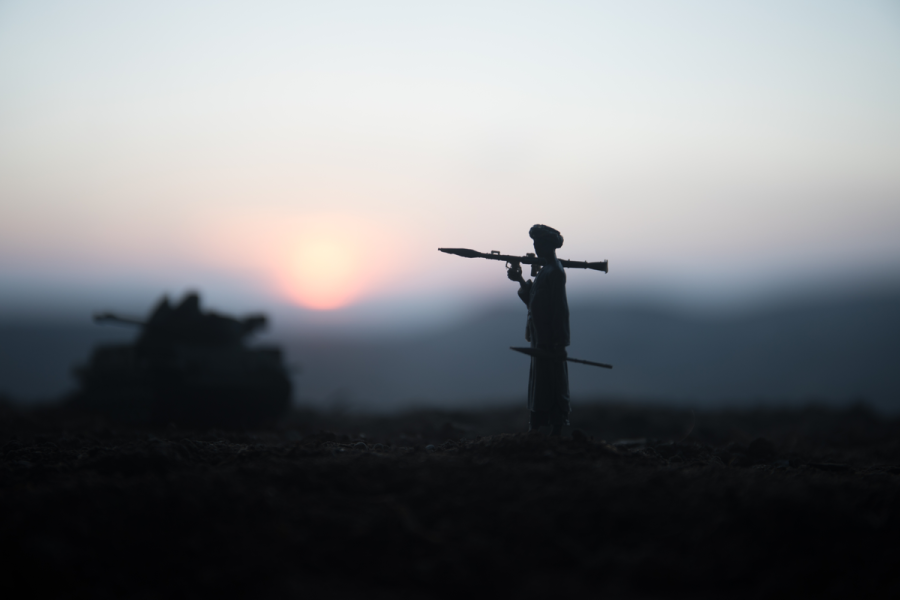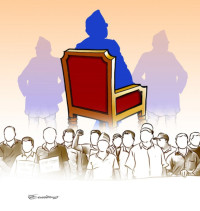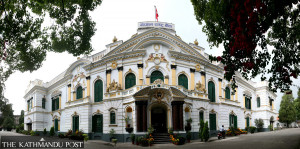Columns
Pakistan’s Taliban monster
The problem with sponsoring militant groups is that they do not always remain under your control.
Shashi Tharoor
The late head of Pakistan’s powerful Inter-Services Intelligence (ISI) agency, Lieutenant General Hamid Gul, was fond of boasting that when Afghanistan’s history came to be written, it would record that the ISI, with the help of America, defeated the Soviet Union. And next, he would slyly add, historians would state that the ISI, with the help of America, defeated America.
Gul’s boast was not the sort of empty rodomontade that military men are notorious for once they hang up their uniforms and recall their past as being more glorious than the details might warrant. He was right to argue that it was the ISI’s tactic of sponsoring militants and terrorists—amply armed, supplied, and financed by the United States—against the Red Army in Afghanistan that forced the Kremlin to withdraw ignominiously.
Subsequently, using the same approach and initially many of the same personnel and methods, Pakistan created and sponsored a mujahideen group calling themselves the Taliban, or 'students' of Islam, who swiftly took over Afghanistan and ruled it as a wholly-owned ISI subsidiary. Things were rosy for Gul and his ilk until Osama bin Laden, a former mujahideen fighter who enjoyed the hospitality of the Taliban’s new 'Islamic Emirate,' ordered the September 11, 2001, terrorist attacks against the US from his Afghan hideout.
America’s furious response resulted in the overthrow of the Taliban and the exile of bin Laden, under ISI protection, to refuge in a Pakistani military redoubt. The ISI had even less to crow about when the US tracked down bin Laden to a secure compound in Abbottabad and special forces killed him there in 2011.
But as America wearied of being bogged down interminably in Afghanistan, and the ISI helped its Taliban clients to rearm, reorganise, and resume their operations against the US-backed regime in Kabul, the tide turned in the ISI’s favour. President Joe Biden has announced that US forces will withdraw completely from Afghanistan by September 11, the 20th anniversary of the 9/11 attacks. The date that long symbolised America’s determination to strike at the root of the terrorist attacks against it now signifies its lack of will to continue.
Whatever face-saving successor arrangements the US may put in place to mask its capitulation, its withdrawal from Afghanistan, with none of its long-term objectives achieved, is a defeat. With the Taliban more powerful than ever and poised to reclaim power in Kabul, the only external victor will be the ISI. As Gul foresaw, it will have defeated America with America’s help. Pakistan has now received two decades’ worth of US military assistance, totalling an estimated $11 billion.
The ISI has long been obsessed with the idea that controlling Afghanistan would give Pakistan the 'strategic depth' needed to challenge its main adversary, India. A Taliban regime (or even a Taliban-dominated coalition government) in Kabul is the best guarantee of that. The Taliban factions are so beholden to their Pakistani benefactors that, as Afghan President Ashraf Ghani acidly remarked, their decision-making bodies—Quetta Shura, Miramshah Shura, and Peshawar Shura—are named after the Pakistani towns where they are based.
But Gul’s successors would be wise to tone down their celebrations. First, the US withdrawal from Afghanistan removes a vital source of leverage for Pakistan in Washington. It may not be good news for Pakistan if the Americans need it less.
Furthermore, as the ISI knows, the problem with creating and sponsoring militant groups is that they do not always remain under your control. The lesson of Mary Shelley’s Frankenstein—that the creatures we give life to can develop minds and needs of their own—has been apparent elsewhere as well, not least in Israel’s role in building up Hamas as a rival to the Palestine Liberation Organisation.
The same thing has happened in Pakistan, where the period of sullen cooperation between the Pakistani authorities and the US during the post-9/11 American crackdown in Afghanistan spawned the rebellion of the 'Pakistani Taliban.' While the Afghan Taliban needed Pakistani refuge, ISI safe houses, funding, and arms to mount the insurgency that has brought the US to the point of withdrawal, the Pakistani Taliban have attacked their own erstwhile godfathers for insufficient fealty to militant Islam.
The ISI no doubt hopes that once US forces are gone and the Afghan Taliban is securely entrenched in Kabul, it can persuade the Pakistani Taliban to forgive and forget the agency’s previous transgressions. If that happens, the thinking goes, peace will be restored, the ISI will control Afghanistan, and the Pakistani mujahideen will stop targeting Pakistani army installations and convoys, and join the ISI in intensifying attacks on the 'real enemy,' India.
But a nightmarish alternative scenario for the ISI is also possible. Pakistani militant groups, emboldened by the success of their brethren in Afghanistan, might no longer be prey to the military’s blandishments. Instead, they could launch terror attacks with the aim of emulating in Pakistan what the Taliban have achieved in Afghanistan. If Afghanistan can be run as an Islamic emirate, they may ask, why can’t we do the same in Pakistan? Why dance to the ISI’s tune when we can call our own?
In such a scenario, the ISI’s heady moment of triumph on 9/11 this year could seem increasingly hollow, as the vipers it has nurtured strike at its own breast. True, the Pakistani Taliban—without a state sponsor of their own—has less chance of success than their Afghan counterparts. But they can still do considerable damage, in the process intensifying the Pakistani public’s disenchantment with the military’s domination of their country.
Should that happen, we will need to extend Gul’s account and say that the ISI, as the agent of the Pakistani military, helped to 'defeat' or at least discredit itself.




 15.12°C Kathmandu
15.12°C Kathmandu















